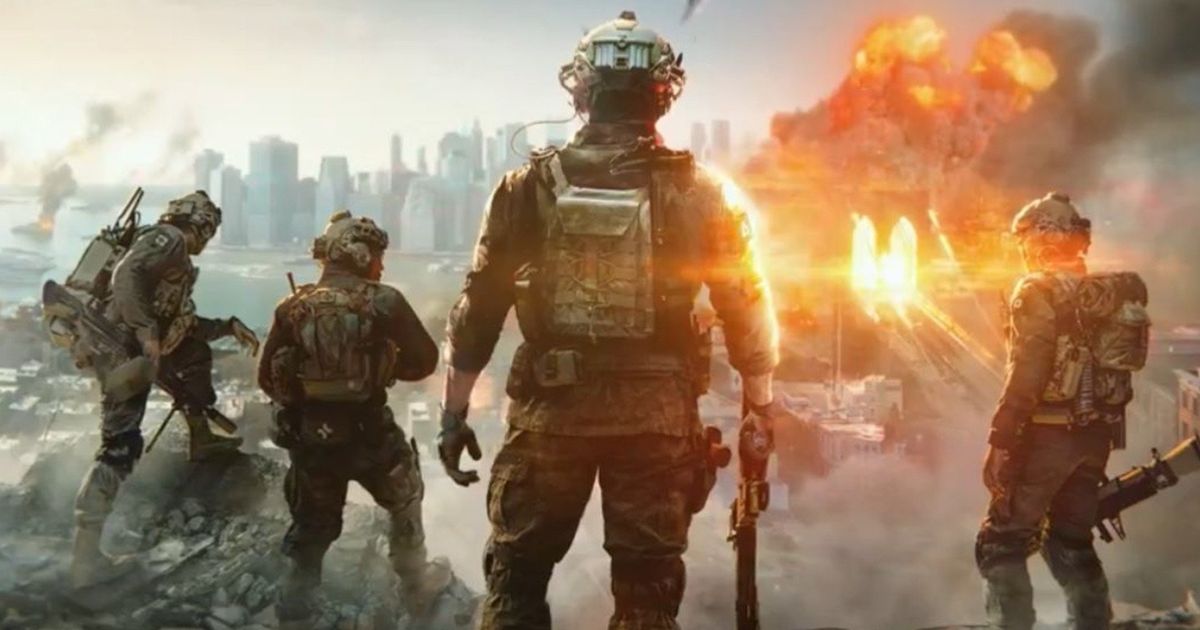The developers of Battlefield 2042… well, let’s face it: they screwed up, to put it mildly. And this year the episode was even more difficult. The eyes of not only all fans of the series, but also the entire gaming industry were riveted on him. With some exaggeration, it can be said that Battlefield 6 will decide the fate of the entire series. EA and DICE simply cannot afford another fiasco.
I also approached the six with caution. The first sign that Battlefield might be a success was the appointment of Vince Zampella as head of development. After all, this is the man behind the first Call of Duty and then Titanfall. What else? I was immediately excited by the first previews – although I knew I would have to temper my enthusiasm. But once I tried the beta version, almost all fears disappeared and I looked forward to the release like a little boy. And honestly? I’m happy to report that it worked. In my opinion, Battlefield 6 is exactly the game that fans have been clamoring for for years. So, ladies and gentlemen: Battlefield is back.
The DICE studio has learned from its mistakes and at first glance it is clear that Battlefield 6 really listened to the numerous complaints of players in recent years. The maladies of the previous installment have all but disappeared, and the series is truly returning to its roots. However, this time it is not just an empty marketing slogan that people repeat every year. I really got the feeling that the developers are trying to build on the success of the third and fourth parts.
Gone are the futuristic environments, natural disasters, all sorts of gadgets and character abilities. Let’s return to the present. The series is back on its feet and everything seems more believable. The severity of the modern conflict is felt at every step – from technology to weapons and equipment. Even the story campaign is back. Personally, I’m really glad it’s back, even though it’s actually one of the weaker aspects of this year’s Battlefield. But let’s not get ahead of ourselves, I’ll come back to this later. Because the main thing that most players are interested in – and where Battlefield 6 clearly dominates – is multiplayer. The game currently offers eight game modes and nine maps. Five modes focus on small encounters, while the rest focus on the classic big battles we associate with the series. In addition, the cards dynamically adjust their size to the selected mode. Thus, each mode supports the majority of cards. Eight released this year provides a solid foundation for everyone to find a battlefield that suits them. We already know there will be at least one more by the end.
Don’t like big maps and prefer close combat? King of the Hill or Rush, where the attacking team successively bombs the defending team’s territory, will not disappoint. But if you want to experience the “real battlefield” as we know it, you’ll appreciate the large maps with ground and air technology in the classic Conquest mode. That is, a mode in which you occupy points on a large map. “Breakthrough” has returned, where one team defends selected points while the other tries to defend them. Or in the completely new Escalation mode. It all starts just like the classic Conquest: the goal is to dominate and save as many points as possible. However, as you capture points over time, the map shrinks until there are only three key points left, where every meter is contested. Personally, I was quite satisfied with this mode. It perfectly balances the scale of large maps with the intensity of small skirmishes. For the biggest classic games there is also team deathmatch, which involves two or four teams. The number of modes seemed sufficient to me. Each one is different enough in its own way that there really is something for every player, and also differs in map size, objectives and number of players. Thanks to this, it is also dynamic in other ways and thus suitable for different types of mods. Personally, I enjoyed alternating between them to get faster action and more tactical passages, which makes me glad that the introduction already has so many of them. I may have personally missed some bike mod where death was permanent. In this particular case it would have suited Battlefield as it would have required more tactics and caution. Instead, all modes here are primarily focused on scoring points, with a maximum of kills. At the same time, I’d also welcome some ranked matches to split the space between people who want to enjoy the game first and foremost, and the “prospectors.”
I will be happy to praise the cards themselves. They are complex, inventive and full of detail. Buildings, vegetation, varied terrain or trenches await at every turn, giving the space depth. Additionally, more open maps work great with verticality. You won’t find large empty spaces here. Everywhere you can find cover, tactics, and it makes sense to fight for every piece of territory. I also like the diversity of the environment. You first fight on the streets of a desert city under construction, then in the snowy mountains, and then move to the busy streets of New York. Each map is unique and requires its own playstyle – and I really like that. Fans will also be pleased to see the return of the classic Operation Firestorm map from Battlefield 3. It’s been given a more modern twist, but retains the old, honest feel. feeling.
However, there was one thing I was missing: a larger scale. Battlefield has always been known for its slower, more tactical style of combat, where patience and planning play a big role. By reducing the size of the maps, everything became a little more dynamic and rich. Death is no longer so painful because you get back on track much faster.
Source :Indian TV

